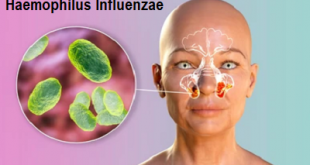Definition Septic arthritis is also commonly referred to as bacterial or infectious arthritis. It is an intensely painful infection in a joint. Bacteria, viruses, and fungi may invade the joint through various routes that cause inflammation of the synovial membrane. With the onset of inflammation, cytokines and proteases are released, …
Read More »Meningococcal Disease – Signs, Symptoms, and Risk factors
What is Meningococcal Disease? Meningococcal disease is any type of infection that’s caused by the bacteria Neisseria meningitidis, which is also called meningococcus. The bacteria can infect the meninges and the blood. These infections can be serious, even fatal. They’re called meningococcal meningitis and meningococcal septicemia. The word “meninges” means the …
Read More »Pneumococcal Disease – Introduction, Causes, and Treatment
What is Pneumococcal Disease? Pneumococcal disease is an infection caused by bacteria called Streptococcus pneumoniae (also known as pneumococcus). It’s contagious and may cause severe illness, so early diagnosis and treatment is important. Pneumococcal disease can affect many different systems in your body. It may result in conditions with mild symptoms like …
Read More »Primary Amoebic Meningoencephalitis (PAM) – Overview
What is primary amoebic meningoencephalitis? Primary amoebic meningoencephalitis (PAM), also called amoebic meningitis, is a serious illness. It causes inflammation of the brain. An amoeba (Naegleria fowleri) causes PAM. The amoebas live in warm, fresh water and soil. Infection often happens during water-based recreational activities. Although many people have contact with the …
Read More »Vibrio Vulnificus – Definition, Transmission and Risk Factors
Definition Vibrio vulnificus is a bacterium that occurs naturally in marine and estuarine waters throughout the world. It thrives in warm waters (especially warmer than 18ºC) and it is therefore common in tropical and subtropical estuarine and sea waters. The bacterium can be present in the water itself and in …
Read More »Haemophilus Influenzae – Diagnosis and Prevention
What is Haemophilus influenzae? Haemophilus influenzae or H. influenzae, represents a group of bacteria that may cause different types of infections in infants and children. H. influenzae most commonly causes ear, eye, or sinus infections, and pneumonia. A more serious strain of the bacteria called H. influenzae type b has been …
Read More »Melioidosis – Symptoms & Signs, Diagnosis, and Treatment
What is melioidosis? Melioidosis, also known as Whitmore’s disease, is an uncommon bacterial infection caused by Burkholderia pseudomallei. The disease affects humans and animals. Individuals acquire the bacteria through direct contact with contaminated soil and surface waters. Transmission The bacterium that causes melioidosis usually enters the body via cuts and sores …
Read More »Lymphangitis – Symptoms, Causes & Treatment.
What is Lymphangitis? Lymphangitis is an infection or inflammation of the lymphatic system. The lymphatic system is a crucial part of the immune system. It is designed to collect fluids from cells and tissues in the body and help them re-enter the bloodstream. The organs within the lymphatic system, such …
Read More » Diseases Treatments Dictionary This is complete solution to read all diseases treatments Which covers Prevention, Causes, Symptoms, Medical Terms, Drugs, Prescription, Natural Remedies with cures and Treatments. Most of the common diseases were listed in names, split with categories.
Diseases Treatments Dictionary This is complete solution to read all diseases treatments Which covers Prevention, Causes, Symptoms, Medical Terms, Drugs, Prescription, Natural Remedies with cures and Treatments. Most of the common diseases were listed in names, split with categories.








